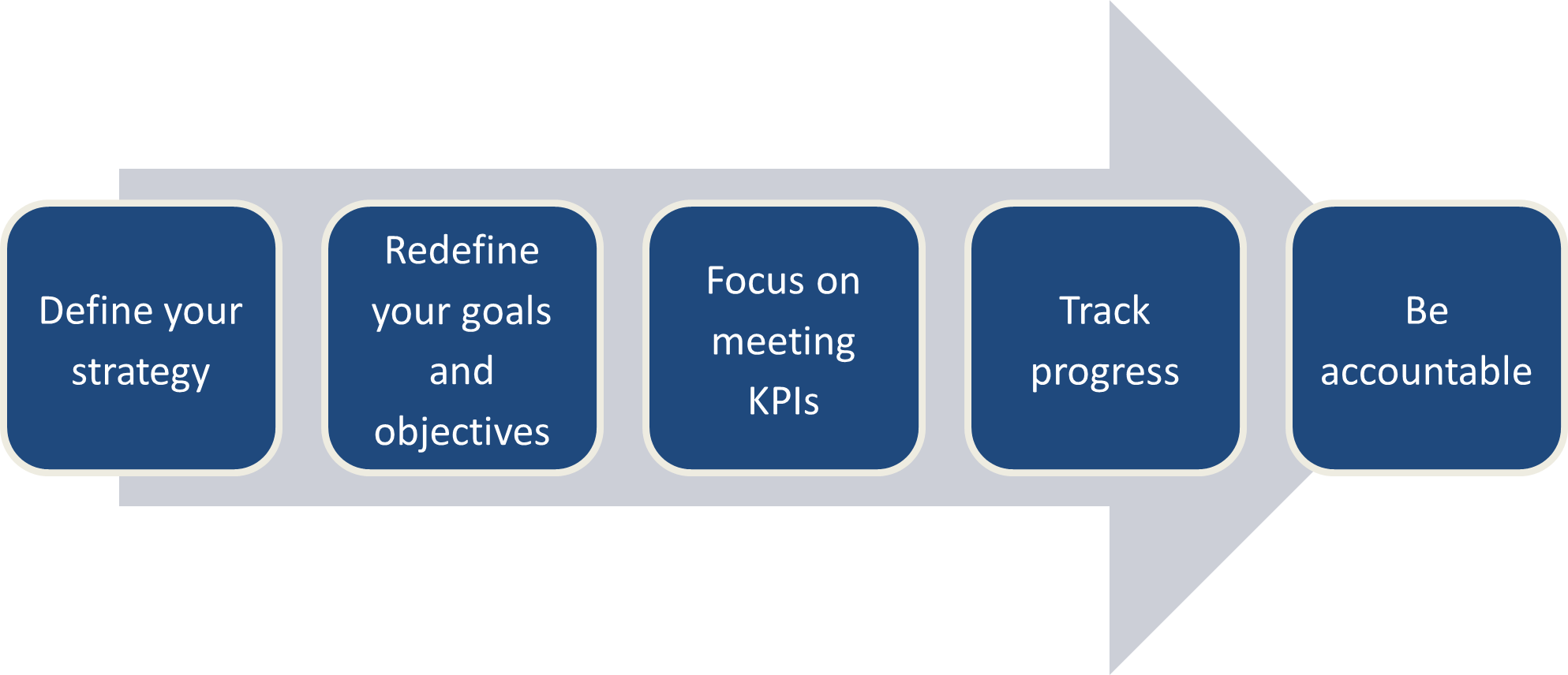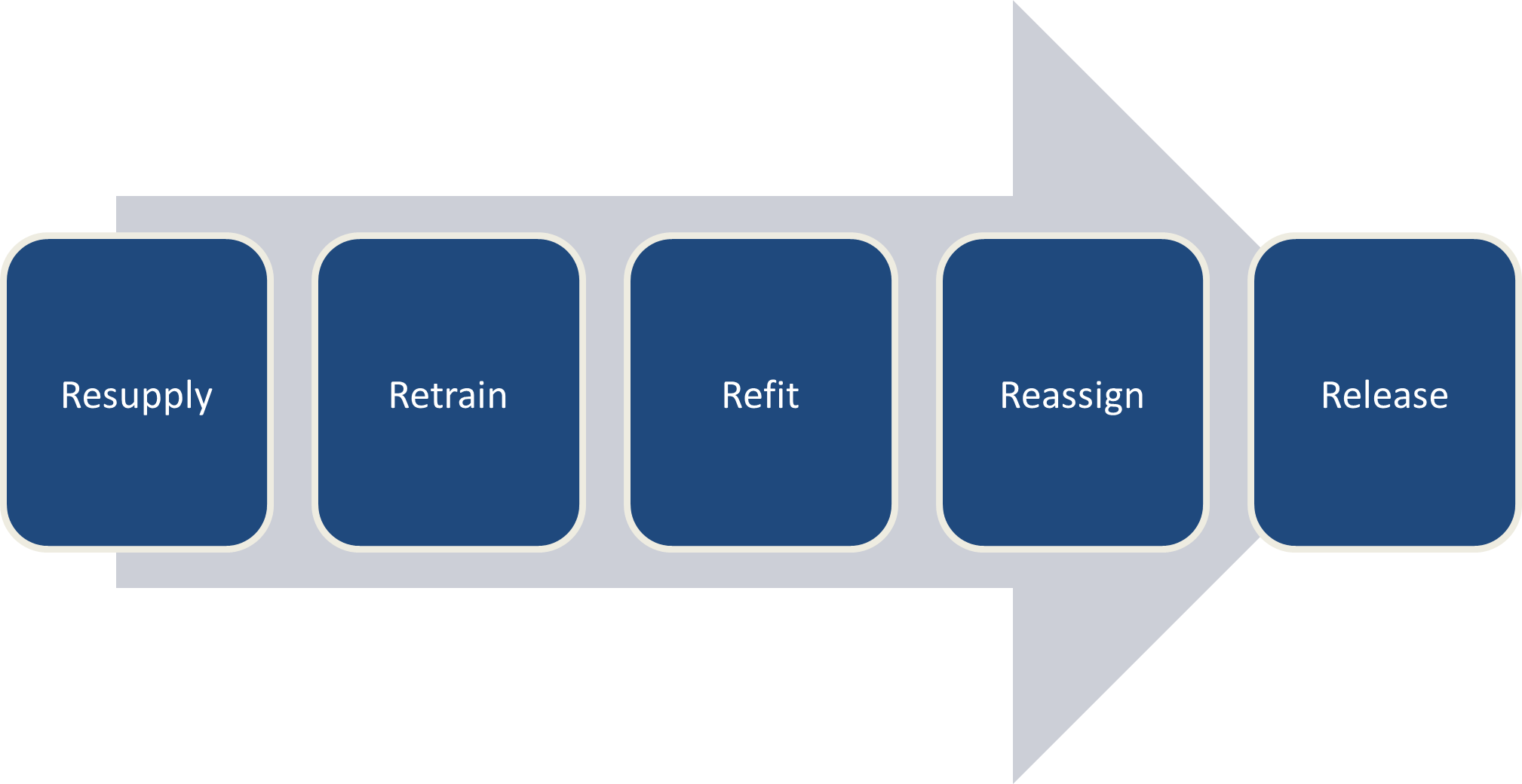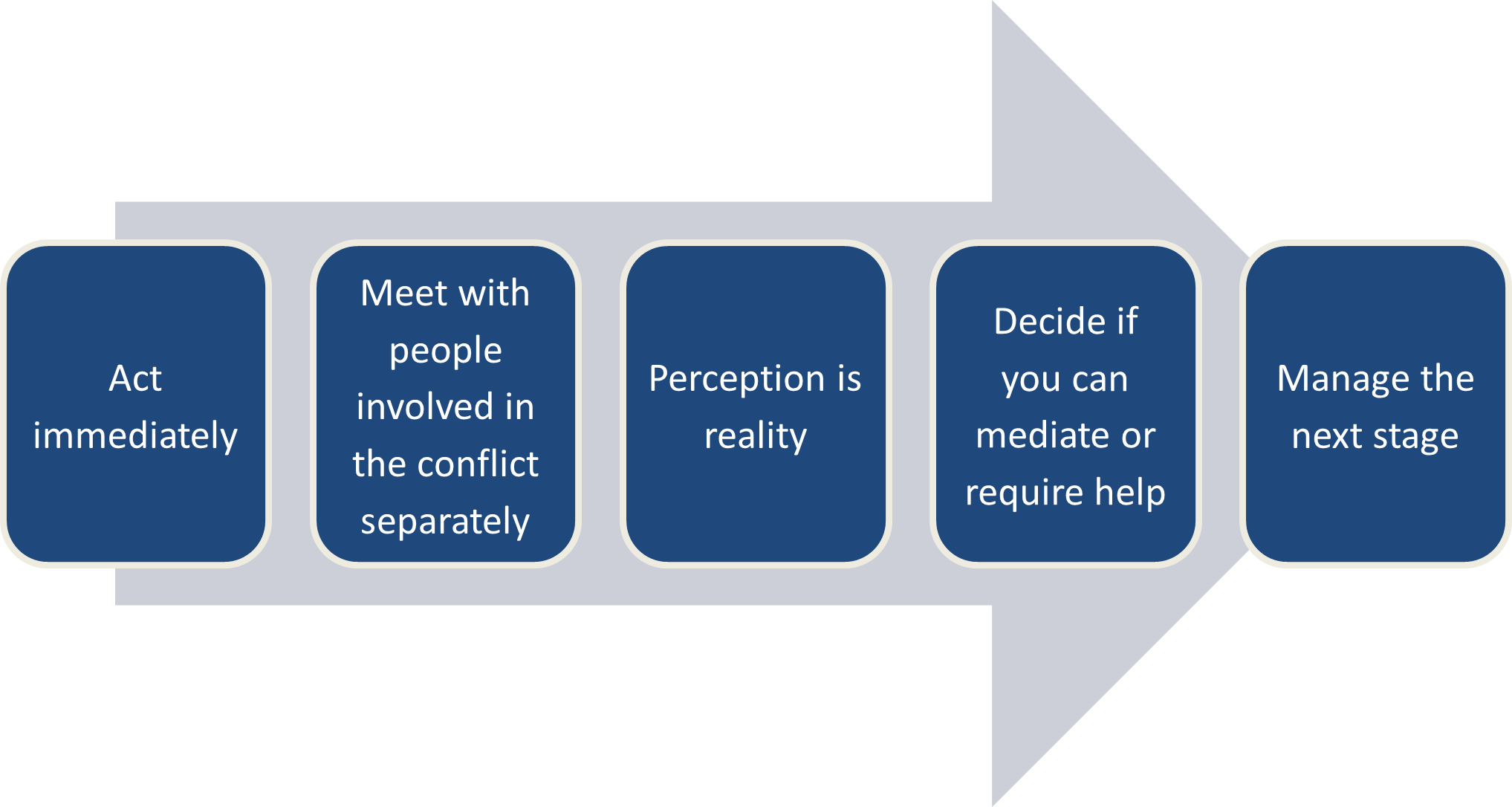Workplace collaboration is when two or more people cooperate to work on a task or solve a problem. Each individual shares their skills and ideas to reach a common goal. Collaboration can increase efficiency and creativity because it combines different people’s skills, knowledge, and expertise. It also enables employees to work together and creates ideas that can help improve their workplace.
Methods of collaboration
The following are general ways you can collaborate effectively to complete work tasks:
 |
 |
 |
 |
 |
 |
| Engage in networking Networking involves building strong relationships that benefit both sides. Try to convey expectations of high performance by encouraging input in the goal-setting process — not to set basic strategy, but to decide how to achieve company goals. |
Communicate Clear communication ensures that everyone understands their responsibilities and knows how to accomplish their tasks. It also guarantees that everyone is working towards the same goal and prevents conflicts. |
Focus on strengths Accept that everyone has different skill sets and preferences. Use this to your advantage by assigning people to the tasks that you know play to their strengths. |
Identify areas of improvement Point out ways they can improve without making it seem like you are criticising them. Give feedback in a direct, yet non-accusatory way. |
Provide support Support can come in various forms, such as giving advice or guidance when someone needs help with a task. Guidance means walking them through their tasks and giving suggestions to address issues. You can also offer resources and training opportunities that can make their tasks easier. |
Recognise good work Acknowledge each other’s achievements and offer incentives to further motivate them. |
The methods discussed above help ensure that collaborations between team members run smoothly. They help make sure that each team member has a safe space to share their thoughts on their work tasks. These methods can then be used to implement the strategies your team planned in the previous subchapter.
Facilitating collaboration
When collaborating and working in teams, it is important to have someone guide the team through what they are doing. It is easy for your subordinates to feel lost when they are in the midst of a group discussion. Because of this, part of a leader’s task is to step in and facilitate the collaboration within the group.
Some important things to note when facilitating collaboration between your team members include:
Set goals for employees and rewarding successes
You can set goals for your employees to think up ways of making work processes more efficient. Perhaps each employee can be tasked to provide one suggestion by the end of each week and you will assess which idea is the best. This will be followed with a reward for the employee and equally important, implementation. The reward can be tangible ones like giving monetary incentives, or intangible ones like recognition from the organisation by announcing the winner to the rest.
Motivate your employees to be creative and give them an outlet to do so
Your employees may already be motivated to be creative but have no outlets to voice out their ideas. While the outspoken ones can always speak to the management about some suggestions they have in mind, others may be too shy or afraid to do so in this manner. Providing a suggestion box or anything similar would grant these employees the anonymity and confidentiality they crave, thereby inspiring the creative spirit that you wish to instil as part of the organisational culture.
Have fun at work
Sometimes, too serious a mindset can hinder creativity. Having fun during work allows one to be relaxed and that is where one tends to get inspired with wonderful ideas. Needless to say, a stressful or even depressing work environment does not give one the mood to think of doing things differently. The employee would only look forward to the end of the day.
Psychological studies have revealed that positive mood can spur creativity. The idea is that a positive mood awards people with greater flexibility in thinking because it widens perspectives. Knowing such findings now, incorporating fun into the work through team-bonding activities or retreats every once in a while can be a crucial element in injecting creativity in the workplace.
Encourage risk-taking
One reason why employees are not thinking out-of-the-box or coming up with a solution that is vastly different from how things used to be done is that they may be afraid of the repercussions of making mistakes. Risk-taking has to be encouraged and be seen as a norm in the organisation. Developing a creative culture takes time, but it starts off with management being more open-minded and less judgmental to the suggestions of employees.
Employees with comparable backgrounds, qualifications, and experiences create a homogeneous working environment. Perhaps having such homogeneity between the employees will facilitate team-bonding and such, but when it comes to workplace creativity, a uniform and agreeable crowd leaves little room for ideas to flourish.
Develop innovation teams
A more systematic way of promoting creativity in the workplace is to set up innovation teams. Each innovation team will be tasked to come up with ideas on how to improve the work process of a particular aspect. Deadlines are to be set to ensure that the teams present their ideas and be rewarded if they are excellent. When done properly, this will signal to everyone that the organisation values work-related creativity.
One catch is that such innovation teams may be seen as too ‘deliberate’ to some employees. Creativity is supposed to be spontaneous; ideas arising from the strokes of genius. Having such teams may make it seem like an extra chore for those assigned to them and the systematic approach (i.e. the focus on a single topic) may come across as too rigid for creativity to flourish.
Implementing strategies
As mentioned earlier, collaboration methods can be used in implementing the strategies you and your team develop. For example, you can clearly communicate how the strategies the team developed will impact the performance of their work tasks. You can also communicate what is expected of each team member depending on the tasks they must finish.
When implementing strategies, ensure to follow the following steps:

Define your strategy
The first step to implementing your strategy is knowing what your strategy is. It is important that the team knows and understands the strategy so that everyone is on the same page. Being aware of what the team is going to be working on will also help members become less confused about the processes that come with their work tasks.
Redefine your goals and objectives
Remembering your goals and objectives is a vital part of implementing your strategy. It is crucial to remember what your goals are so you can ensure that your actions are in-line with what you want to achieve. This will also remind your subordinates of what is expected of them so they can have a clear vision of the tasks they must do.
Focus on meeting KPIs
Key performance indicators (KPISs) is an effective way to measure the attainment of objectives and goals. They help ensure that each team member is meeting his or her targets and quotas for a particular time period. An example of this would be meeting the required time limit set for particular workplace tasks.
It is important for every team member to focus on meeting KPIs because this helps improve the organisation’s performance. High-level KPIs are a clear indicator that the organisation’s goals are being achieved, while low-level KPIs indicate that improvements need to be made within the organisation.
Track progress
This step is significant because it helps monitor performance and progress. It also helps team members see their contributions to the goals the team is trying to achieve. By tracking progress, everyone can ensure that each team member is on the right track. You can track progress by holding weekly meetings and discussing when members plan to submit their work or when members plan to start doing a particular task. These meetings can also be used to discuss questions and concerns members may have about the tasks they have been doing.
Be accountable
Each team member must be accountable for each task he or she accomplishes. It is important to maintaining a sense of accountability in all the tasks you accomplish because it helps you value your work and the time and effort you invested in it. It also helps build up your team member’s confidence, especially when they succeed in tasks.
Collaboration
From the discussions above, it is evident that communication is needed to successfully achieve tasks. However, one should also be mindful of the relationships between team members to successfully collaborate with one another.
As a manager, the way that you and your co-workers behave with one another is crucial to the way that your relationships develop. Good behaviour among both internal and external contacts will result in positive and effective relationships. Positive relationships will cause everyone to be more successful in meeting the overall objectives of the organisation. However, if poor behaviour is the norm, you are likely to have negative relationships and consequently, the organisation will likely fail to meet its objectives.
Some techniques you can use to develop positive relationships with your co-workers include:
Having a supporter interpersonal style
Having a supporter interpersonal style helps in developing positive co-worker relationships because it is relationship-oriented. An employee must be cooperative, patient, kind, and attentive when communicating with their co-workers to achieve collaboration and friendship, which results in having a positive relationship with co-workers.
You can develop trust and confidence in your teammates using this interpersonal style by verbalising your appreciation and support of each member. You can also do so by strengthening your connection with your team members.
Practising positive communication
Practising positive communication helps in developing positive co-worker relationships. Employees who restructure their messages using positive language, phrasing, and words help in boosting other employees’ morale and engagement, resulting in a positive relationship and no hard feelings for each other. By positively communicating with your employees, you can also ensure that you are developing trust and bringing out their confidence. This is because doing so makes them feel like they are valued and appreciated.
Conducting consultations when conflicts arise
An employee must make time to consult with the other concerned employees to talk about their conflict and find a way to resolve it. This develops positive relationships with co-workers because it shows that the employee values their friendship with their co-workers before it gets destroyed. Conducting consultations when conflicts arise shows that employees’ voices and concerns are heard, which builds trust and confidence among co-workers.
Being sensitive to diverse cultural backgrounds
An employee who is sensitive to a co-worker’s different background equates to someone who is respectful of their varying traditions, beliefs, etc. Giving respect to co-workers foster positive relationships.
Being sensitive to co-workers’ diverse backgrounds builds trust because there is the assurance that being different is not going to affect how the organisation works, etc. It builds confidence in the way that it allows those who have different backgrounds to do their job properly, without being judged by their co-workers.
Being sensitive to diverse social backgrounds
An employee who is sensitive to a co-worker’s socioeconomic status, geographical origin, sexual orientation, gender, etc. shows that they are not discriminatory when being friends with them. This promotes a positive relationship among co-workers.
Being sensitive to other employees’ varying social factors builds trust because sensitive topics are handled well by the employees. It builds confidence because the system of the organisation is adjusted to cater to the needs of everyone, resulting in the members being able to do their work according to their respective capacities.
Being active in building networks
Being active in networking helps develop positive co-worker relationships because an employee gets to gather new ideas, get access to useful knowledge and opportunities, get advice and support, etc. Being helpful in one way or another contribute to the development of positive co-worker relationships.
A bigger network, put simply, means that you know more people. As mentioned previously, the more people you know, the more likely it is that someone in your network will be able to assist you in a positive manner. Having a big network also means that you need to know people outside your area of speciality. Look for people who perhaps work in a different area or who may come at a problem from a different perspective—network with customers, suppliers, and even the competition.
Part of this technique is exchanging ideas and support, which encourages employees to share their co-workers. This results in building trust and confidence among the employees because they know their ideas and support are valued.
To build positive work relationships, you must always ensure to build trust and confidence in your team. To do this, you must ensure to consider the different interpersonal styles of your subordinates and you must ensure to be culturally and socially sensitive to their needs.

Interpersonal styles
Different people working together also means different interpersonal styles. Interpersonal styles refer to the various ways people interact with others – this includes the behaviours and practices each person uses when interacting with others.
Having a good understanding of the different interpersonal styles can help you understand how to approach and converse with others. This is especially helpful if you must work with people you are not familiar with for extended periods of time to complete a project. By applying your understanding of interpersonal styles, you can adjust your interactions depending on the interpersonal style demonstrated by others.
The four types of interpersonal styles are:
 |
 |
 |
 |
| The supporter | The visionary | The analyser | The pragmatist |
The supporter
These people are good listeners and seek to create a climate of trust. They focus on team harmony and prefer informal discussions. They also prefer to make decisions by taking everyone's opinions into account.
Supporters are compassionate, kind, and patient. They ensure to carefully listen to who they are talking to and always express their opinions thoughtfully and calmly. Because of these characteristics, supporters are usually the ones being approached first when employees share their problems and concerns.
The visionary
These people are creative, good at brainstorming ideas, and encourage their teams to be innovative. They enjoy talking to other people and always try to let people understand where they are coming from. Visionaries enjoy lively discussions but often lose track of time.
The analyser
These people are critical thinkers and focus on accuracy. They encourage their teams to solve problems using analysis. They usually prefer formal discussions and want to check data first, which makes them slower at making decisions. Analysers often disregard the feelings and opinions of others. They are open communicators and can be assertive in expressing their opinions.
The pragmatist
These people are focused on goals and results and are effective at handling crises. They prefer brief, concise discussions and want work to be done in an organised, quick manner. Pragmatists make loyal and reliable co-workers who can always be counted on to do what is right.
Building trust
As mentioned earlier, considering your subordinates’ interpersonal styles is a big factor in building trust between you and your co-workers.
Mutual trust is a shared belief that you can depend on each other to achieve a common purpose. A more comprehensive definition may be that trust is the willingness of a party (also known as the trustor) to be vulnerable to the actions of another party (trustee) based on the expectation that the trustee will perform an action important to the trustor, regardless of the trustor’s ability to monitor or control the trustee.
To build trust and confidence in your co-workers, follow these techniques:
Having a supporter interpersonal style
Employees who have this style are naturally enthusiastic. They usually draw out the most reserved personality of their co-workers and verbalise their appreciation and support of them. Doing these brings out their co-workers’ confidence. Additionally, employees who have this style share similar experiences to strengthen their connection with their co-workers, therefore building trust among them.
Practising positive communication
Practising positive communication builds employees’ trust and confidence in their abilities, especially when giving feedback or constructive criticisms. Positive communication helps them motivate themselves to do better.
Conducting consultations when conflicts arise
Conducting consultations when conflicts arise shows that employees’ voices and concerns are heard, which builds trust and confidence among co-workers. This will be further discussed in Section 2.3.2 of this guide.
Being sensitive to diverse cultural backgrounds
Being sensitive to co-workers’ diverse backgrounds builds trust because there is the assurance that being different is not going to affect how the organisation works, etc. It builds confidence in the way that it allows those who have different backgrounds to do their job properly, without being judged by their co-workers.
Being sensitive to diverse social backgrounds
Being sensitive to other employees’ varying social factors builds trust because sensitive topics are handled well by the employees. It builds confidence because the system of the organisation is adjusted to cater to everyone’s needs, resulting in the members being able to do their work according to their respective capacities.
Being active in building networks
Part of this technique is exchanging ideas and support, which encourages employees to share their co-workers. This results in building trust and confidence among the employees because they know their ideas and support are valued.
Networking is a critical skill for employees at all levels and in all job roles. It is often said, ‘it is not what you know, but WHO you know.’ This maxim is not completely true; skills and knowledge are also critical for job success, but there is a ring of truth to it. Most positions are filled through referrals from employees’ networks.
Trust develops from consistent actions that show others you are reliable, cooperative, and committed to team success. A sense of confidence in the workplace better allows employees to work together towards a common goal.

Building trust in your team
Building trust in your team and monitoring your work relationships
The following are ways you can develop trust in your team:
- Be honest about the positive and negative aspects of the business - This sense of integrity makes your colleagues more trusting of your actions.
- Involve everyone in achieving organisational goals - Be transparent with your organisation’s mission and goals, so everyone feels that they are a valuable part of obtaining those objectives. Employees who feel valued are more likely to instil trust in their organisation’s leaders.
- Value all input - Encourage employees at all levels to share their ideas for improving the organisation. Listen with an open mind even if you do not ultimately choose to follow a suggestion, as this shows that you trust their ideas and experience.
- Make decisions based on the overall benefit for everyone - Show employees that you care about their future, as well as the growth and success of the organisation.
- Acknowledge successes - Emphasise group achievements to show you are aware and proud of your colleagues and their successes.
It is significant to maintain the trust and good relationship you established with your team members. The more you build a relationship of trust between your team members, the more tasks you can accomplish as a team. Ensure to monitor your work relationship between your co-workers so you can determine if your co-workers are happy and satisfied in your workplace.
Monitoring your work relationships
Some methods that will help you monitor your work relationships include:
- Staff welfare checks - This method can be used to monitor co-worker relationships because it interrogates the employees about their personal and professional lives, including their relationship with their co-workers. This shows if they are having any issues with any of their co-workers.
- Evaluations - Evaluations are the most common way to monitor work relationships. Here, you can simply allow your workmates to determine the quality of your relationship through surveys and employee wellness checks. You can also measure how happy they are with your leadership and whether they are satisfied with the work relationship they have with you.
- Follow-ups - Follow-ups can seem daunting at first for your employees, but when done right, it can help you in determining where your work relationship stands. By following-up on your employees every now and then, you can ask them about how they are doing and how they feel about your leadership.
- Open forums - Open forums allow each member to share their thoughts and insights about what it is like in your workplace. This can include their sentiments on your work relationship and can also serve as a means for you to bond with your team.

Not all employees enjoy being at work and being around their workmates at all times. Sometimes, employees can feel down or depressed about the difficulties they encounter at work. These feelings can then cause them to be absent from work, be prone to conflicts, or to deliver unsatisfactory performance when completing tasks.
Managing poor performance
Before you can fix poor performance, you have to understand its cause. Incorrect diagnoses can lead to lots of problems later on. If you believe an employee is not making enough of an effort, you will likely put increased pressure on them to perform. But if the real issue is with ability, then increased pressure may only make the problem worse.
Low ability may be associated with the following:
- Over difficult tasks
- Low individual aptitude, skill, and knowledge
- Evidence of strong effort, despite poor performance
- Lack of improvement over time
People with low ability may have been poorly matched with jobs in the first place. They may have been promoted to a position that is too demanding for them. Or maybe they no longer have the support that previously helped them to perform well.
There are five main ways to overcome performance problems associated with a lack of ability. Be sure to address each of these interventions in one-on-one performance interviews with employees.
Consider using them in this sequence, which starts with the least intrusive method:

Resupply
This step involves asking employees about the additional resources they might need. If some employees feel frustrated, listen to their opinions and note where support is needed. Ensure to investigate their claims with your own investigation after.
Retrain
Providing additional training helps the new trainer identify the areas of the job where they are having a hard time with and practise them to improve their performance. Some ways to provide additional training to employees having difficulties include:
- Training seminars with in-house or external providers.
- eLearning activities
- Simulation exercises
- Subsidised tertiary or industry courses
Refit
When the first two measures are not sufficient, consider refitting the job to the person. Are there parts of the job that can be reassigned? Analyse the individual components of the work and try out different combinations of tasks and abilities. This may involve rearranging the jobs of other people as well. Your goal is to retain the employee, meet operational needs, and provide meaningful and rewarding work to everyone involved.
Reassign
This method involves reassigning the work tasks of employees who are experiencing difficulties in your workplace. Delegating fewer tasks to an employee who has been performing poorly can help lessen the stress they feel about their tasks. It can also motivate them to strive harder to meet what is expected of them.
Reassigning the new trainer to a different task that will suit their abilities better opens the opportunity of them being more productive and effective. Doing this method can help the employees figure out where their skills rightfully fit.
Release
The last method of dealing with poor work performance is releasing the employee from his or her work position. This method should only be followed when all else fails.
Sometimes, there are no opportunities for reassignment and refitting is not appropriate for the organisation. In these cases, the best solution for everyone involved is for the employee to find other work. You may need to consider contractual terms and restrictions; however, in the long run, this may be the best decision for your whole team.
Underperformance can be frustrating for both leaders and employees. No one enjoys when an employee performs tasks poorly, but this should not be a reason to take this against anyone with poor performance. It is important to help and support team members who are having difficulties in your workplace. This will hopefully help them perform better and will also motivate them to get back on track.
Supporting your workmates
Supporting poor performing employees is all about making them feel like they are not alone in your workplace. Life for underperforming employees can be very difficult when they feel like they have no one to talk to or that no one wants to help them. Ensure that no one feels this way in your workplace. Always promote a work environment that supports co-workers and reminds them that they are not alone.
To support workmates who underperform, always make sure to:
Be patient, polite, and understanding when listening to their problems
This is important because you want to ensure that you do not make people feel worse about themselves. The main goal of supporting employees is lifting their spirits up and making them feel better about themselves. Make sure to promote positivity when communicating with people who are performing poorly. This will help motivate them and help them realise that the situation they are in is not going to last forever.
Try to understand where they are coming from and why they are experiencing difficulties with their tasks
Supporting your workmates is not just about making them feel good about themselves. It is also about making them share their insights on the tasks they are performing. Ensure to know why they are having difficulties with performing their tasks. This will help you figure out the best way to manage their poor performance.
Be sensitive and considerate of their feelings
Always be sensitive and considerate of the feelings of others. You should constantly remind your co-workers that their feelings are valid and important. This will encourage them to open up more and share what they feel.
Show respect for their opinions, values, and needs
Showing respect for the opinions, values, and needs of your co-workers will help them feel like they still matter despite their poor performance. It will also help them feel safe when expressing their thoughts and will help them feel like someone cares for them in your workplace.
Know when to allow them to help themselves
While helping and supporting poor performing employees is a good thing, it is also important to know when you should allow them to help themselves. This will help them improve on their work tasks and will remind them that they are capable of achieving your organisation’s goals.
These may sound like simple tasks, but to those experiencing problems, this can mean a great deal. People experiencing difficulties in your workplace will always need a friend they can lean on when they bad about their performance.

Difficulties in workplace relationships are often referred to as conflicts. Conflict is inevitable in many situations. They may range from petty quarrels to more serious problems which can lead to hostility among individuals. In one way or another, everyone is faced with many types of conflict in their day to day lives. As you manage conflict in the workplace, you must remember to adhere to the organisational processes in place. These will help you do manage difficulties in your workplace relationships more effectively. Examples of different conflicts that can occur in your workplace include:
- Conflicts due to different work styles
- Personality clashes
- Conflicts due to leadership style
- Cultural-based conflicts
All types of conflicts affect the relationships between co-workers and your workplace’s cultural and social environment. It can also either support or hinder the achievement of your planned outcomes. However, conflict should not be seen as purely negative. It can become an opportunity for better things and open up opportunities if dealt with properly. This is where conflict resolution comes in. Managing conflict constructively will involve being respectful and openly communicating your concerns to the people involved.
Conflict resolution can be viewed as a peaceful solution to individuals and groups that are in conflict. There are a lot of means and strategies involved in dealing with conflict and all aim to come up with a resolution to it. Just keep in mind that you will need to openly communicate and be respectful to the people involved in the conflict. You can best resolve conflicts in your workplace by:
- Negotiating to resolve conflict between disputing parties - Negotiation is conducted with the disputing parties to compromise on terms favourable to both. There must be a discussion about the conflict and then a negotiation towards a win-win outcome where both sides will get something positive out of the negotiation.
- Mediating to resolve conflict between disputing parties - Mediation is conducted with a third person, usually a Human Resource officer or supervisor, to help disputing parties to achieve a solution or agreement. There must be a formal setting where both parties can air their concerns and the mediator will help them achieve a final agreement and closure. If the disputing parties did not reach an agreement, the mediator must help them determine when is the best time to mediate again to try and resolve the conflict.
Resolving a conflict may take time and this will ultimately depend on its scale. Hence, a person who intends to act as a mediator to parties in conflict needs to have skills, knowledge, and training as well as a clear understanding of the strategies necessary to resolve conflict.
Managing workplace conflict
Things are not always smooth sailing in business. There will always be problems that develop in the day to day running of any business and knowing how best to deal with conflict is an important part of any manager’s toolbox of skills.
No one likes dealing with conflict. It is uncomfortable, difficult, and exhausting – this is particularly true when you have anger and resentment associated with the conflict. But as a manager, it is your role to know how to manage the conflict so that it becomes less of an issue.
Conflicts need to be resolved immediately to prevent it from escalating. Employee stress, health complaints, and workers’ compensation, and bullying claims can be prevented by managers acting quickly to resolve issues between co-workers. It will also be resolved through open communication and mutual respect.
Steps you can take to manage workplace conflict effectively include:

Act immediately
Conflicts do not just disappear. Unmanaged, they can lie dormant for days, weeks, or months. When they finally surface again, they may have escalated. Staff often feel that they are not being heard and therefore, nothing is done in relation to workplace conflict. Unresolved workplace conflicts can impact on workplace culture. This is particularly true in smaller organisations. Productivity, performance, and workplace relationships are impacted quickly when conflict occurs. Avoiding conflict is one of the main causes of claims being made against an organisation.
Meet with people involved in the conflict separately
It is crucial to gain a clear understanding of the issues from all parties before any intervention. Those involved will have very different perceptions of what has occurred. A good and unbiased understanding of their differing perceptions will aid in focusing on what is important for each and to find common ground.
Perception is reality
Usually, what people see is what they believe. If you focus on what the people involved need and what is important to them, rather than attempting to find a ‘right’ or ‘wrong’ is important. Often, both parties have contributed to the situation. Judging and particularly commenting on these judgements can alienate those involved and escalate the conflict.
Decide if you can mediate or require help
Once you have assessed the situation and completed discussions with those involved, you can decide whether you will be able to mediate or will need the help of Human Resources (HR) or external mediators. Managers are successful at resolving simple, recent disputes. However, complex and long-standing issues involving a number of people are best left for experienced mediators to deal with. These kinds of workplace conflicts are often sensitive and require high-level skill to bring them to a resolution.
Manage the next stage
While it can be difficult to arrange meetings in busy workplaces, resolution as soon as possible must be a top priority. Generally, the longer the conflict goes on for, the harder it is to resolve.
If you think of dealing with conflict as a problem-solving exercise, you can actually learn much from its management. You may have to be creative in your solution and this can assist you in ensuring that you have to think outside the box.
Conflicts and consultations

For times when the roles are reversed, where you are not the one managing the conflict, it is important to know what to do in these situations. Misunderstandings with your co-workers can affect both your relationship with them and your productivity at work. Because of this, you must consult about your concern so you can fix your problem immediately.
When consulting about your concern, ensure to:
- Raise the concern with the internal source of the consultee. This can be their immediate supervisor, manager, or Human Resource employee.
- Discuss the concern openly.
- Work together to achieve the desired outcome.
Conducting consultations when conflicts arise develops positive relationships with co-workers. This is because conflict resolution is all about negotiation. It is about finding out what both parties want and trying to come to a solution that makes both sides happy. In doing this, you have to talk with the employees and show empathy for their plight. You also have to build trust and show respect for their values, opinions, and needs. This can help you build rapport and a positive solution to a conflict can help motivate those staff members concerned.
When dealing with conflicts, it is essential to be aware of the organisational processes and legislative requirements in your workplace. Being knowledgeable about these can help you become aware of the standards and working conditions of your workplace.
Legislative Requirements
Legislation is the act of making or enacting laws. When people talk about ‘the legislation’, they mean a law or a body of laws. The legislation in a state or territory is the laws enacted specifically to control and administer the state or territory.
Some of the major pieces of legislation relating to diversity include:
Equal Employment Opportunity Act (Commonwealth Authorities) 1987
This Act refers to the right of all employees to be treated fairly and equitably regardless of their culture, religion, or beliefs through the recruitment, selection, access to information, supervision, and management.
The main focus of Equal Employment Opportunity (EEO) Act is to ensure:
- Fair work practices
- The making of unbiased decisions
- Recognition and respect of various cultural and social background of all staff and customers
- Training development which meets employee needs and customer satisfaction
The EEO Act looks to dissolve discrimination in the workplace. It works to improving conditions so as to reduce employees feeling any negative attitudes or feeling isolated at work.
When hired by an organisation, employees are to:
- Work at the best capacity and complete all tasks and duties given to them
- Work in collaboration with all their colleagues, regardless of any cultural diversity that may exist
- Refuse to accept or to tolerate any form of harassment.
By following this Act, you can ensure that you are doing your responsibilities as an employee and that you are aware of your organisation’s responsibilities towards everyone in your workplace. It will also help you avoid conflicts in your workplace and will help you manage conflicts constructively if they do occur in your workplace.
Disability Discrimination Act 1992
The Federal Disability Discrimination Act 1992 (DDA) provides protection for everyone in Australia against discrimination based on disability. It encourages everyone to be involved in implementing the Act and to share in the overall benefits to the community and the economy that flow from participation by the widest range of people.
Disability discrimination happens when people with a disability are treated less fairly than people without a disability. Disability discrimination also occurs when people are treated less fairly because they are relatives, friends, carers, co-workers, or associates of a person with a disability. From this, ensure that you are aware of this legislation to avoid or constructively deal with conflicts in your workplace. This will help you treat people with disabilities with respect.
Age Discrimination Act 2004
Age discrimination occurs when people are treated unfavourably because of their age, or because of assumptions made about people of that age. Common examples of age discrimination include preferring to hire younger over older workers regardless of competence, refusing to consider job applications from people over pension age, or sacking younger workers when they reach the age where adult wages will apply.
However, specific laws that set age requirements are not age discrimination. For example, laws that limit alcohol sales to adults, or laws requiring that anyone aged between six and seventeen must attend school, are not age discrimination. Being knowledgeable about this Act will help you become more considerate of people of different ages in your workplace. It will also help you avoid and resolve conflicts if they occur.
Racial Discrimination Act 1975
Racial discrimination is when a person is treated less favourably than another person in a similar situation because of their race, colour, descent, national or ethnic origin, or immigrant status. The Racial Discrimination Act aims to ensure that Australians of all backgrounds are treated equally and have the same opportunities.
This Act makes it against the law to treat you unfairly, or to discriminate against you, on the grounds of race, colour, descent, national or ethnic origin, and immigration status. The Act also makes racial hatred against the law. Being knowledgeable about this legislation will help employees become more aware of the need to respect people of different races and treat everyone in your workplace equally. It will also help employees become more aware of their rights and will help you avoid and resolve conflicts in your workplace as well.
The Equal Opportunity Act 2010
The Equal Opportunity Act 2010 states that an employer must not discriminate against an employee by denying or limiting access by the employee to opportunities for promotion, transfer, or training or to any other benefits connected with the employment.
The Act helps prevent and resolve conflicts by allowing each employee to be eligible to grab workplace opportunities such as those mentioned in the legislative requirement. There cannot be any discrimination between the employer and employee, the latter must be treated fairly and without bias by the former.
Sex Discrimination Act 1984
The Act protects people from unfair treatment based on their sex, sexual orientation, gender identity, intersex status, marital or relationship status, pregnancy, and breastfeeding. It also protects workers with family responsibilities and makes sexual harassment against the law.
Knowing these legislations can help you stay informed about your rights and responsibilities in your workplace. It can help you ensure that your work environment is safe and that your rights are protected, which, in turn, helps avoid and resolve unnecessary workplace conflicts.
Organisational Policies and Procedures
Policies are written by organisations to ensure that staff and stakeholders act responsibly and make rational, well-informed decisions. Policies and procedures provide information and set boundaries for staff. For staff and stakeholders to understand their responsibilities within the organisation, it is very important that policies and procedures are adopted and clearly communicated to everyone.
Guidelines are developed to assist and guide members in the workplace in relation to policy implementation. Guidelines are also intended to complement the development of local workplace policies and protocols.
A policy is a formal statement of a principle or rule that members of an organisation must follow. Each policy addresses an issue important to the organisation’s mission or operations.
A procedure tells members of the organisation how to carry out or implement a policy.
Policy is the ‘what’ and the procedure is the ‘how-to’.
Policies are written as statements or rules. Procedures, on the other hand, are written as instructions, in logical steps.
Policies relating to workplace relationships would typically include implied standards such as honesty and respect relative to the organisational culture and generally accepted within the wider community. They may also include:
 |
 |
 |
 |
| Reward and recognition for high performing staff | Standard expressed in legislation and regulations such as anti-discrimination legislation | Written standards | Problem resolution policies |
Below is a table discussing points of comparison between policies and procedures:
|
Point of comparison |
Policies |
Procedures |
|
Frequency of change |
Rarely changes once finalised and implemented |
Frequently changed and updated for continuous development |
|
Conditions needed for best implementation |
Best implemented when all employees fully accept the requirements written within it |
Best implemented when they are created and listed in a logical process that can be easily followed |
|
What it reflects |
Reflects and supports the fulfilment of an organisation’s mission statement |
Represents a policy statement’s practical application |
From the table above, it can be determined that policies are used to guide organisations in the direction they want to proceed in. They are more general in nature and focus more on guiding the organisation in achieving its goals. Procedures, on the other hand, provide step-by-step instructions that will help you accomplish tasks. If you are unsure of the policies or procedures that apply to the workplace, ask a more experienced co-worker to assist you or refer to your organisation’s guidelines or manuals.
It is important to be aware of your organisation’s policies and procedures, especially when dealing with workplace conflicts. This is because they will guide you through your day-to-day operations and they will help you become aware of what is okay and is not okay in your workplace. This also includes what your limits and directions are and what you should and should not do at work.
Legislative requirements and organisational policies and procedures will help you understand how conflicts are resolved in your workplace. As a manager, they will provide you with a guide on how to handle conflicts. For example, if a conflict arises between your subordinates, you might want to consult these documents to handle the conflict fairly and formally

Reporting your work progress to stakeholders is a significant part of any job role. It is important to inform stakeholders of your work progress so they can be involved and informed in the tasks you are doing. These stakeholders will be the same as those identified in Chapter 1. The more stakeholders are aware of your tasks, the more they can ensure that they are not giving you too many or too little tasks. This will also help them make sure that you are following deadlines and that you are completing your assigned tasks.
As a manager, it is important that you monitor your subordinate’s tasks before communicating their work progress to relevant stakeholders. It is also essential to monitor the progress of your subordinates because this helps you determine if your team’s goals have been achieved. It also helps you assess how each team member is doing and will help you make informed decisions about the team’s well-being.
To monitor tasks, ensure to:
Set a time for regular monitoring
Setting a time for regular monitoring has several benefits. First, it helps employees stay on track by knowing when they should expect to be monitored. It can also help you determine when projects are due or if they are behind schedule. Settle on a fixed time for monitoring. This will give your employees enough time to prepare and will also help you keep track of your expectations for a given time period.
Gather information from your team
Gathering information from your team is important because it helps you gain knowledge of each member’s work tasks. When gathering information, be consistent with your process. For example, you can choose to collect information using trackers or by holding weekly meetings.
Adjust your expectations
Not all tasks can be accomplished within their expected time frames. Because of this, it is important for you to adjust your expectations based on your gathered information. This can help you spot and anticipate delays and can help you readjust your timeline so everyone can catch up. It can also help you assess situations and determine if anything needs to be changed in your process.
Communicate your team’s progress to relevant stakeholders
After you obtain information about your employee’s work progress, always relay this information to relevant stakeholders. These stakeholders can refer to anyone who your processes have affected, such as:
- colleagues
- employees you manage
- supervisors
- employees from other departments
- clients
- suppliers
To properly communicate your progress to these stakeholders, you can set up a meeting with both internal and external stakeholders to inform everyone of possible changes, delays, and successes. For example, you can set up a meeting to communicate research findings to your manager or you can also set up a meeting to communicate your product production rate to clients.
When doing so, make sure to:
 |
 |
 |
| Set an agenda | Stay on topic | Document the meeting |
Set an agenda
This involves establishing the desired outcome for your meeting. Determine if you are meeting your stakeholders to simply inform them about your progress, or if you are meeting them to discuss issues about delays or brainstorm ideas that can help the team improve. Doing so will help people know what to expect from the meeting and will help others prepare for your discussion.
Stay on topic
When conducting meetings about your team’s progress, make sure to keep it short and simple. Relay the information that needs to be relayed and ensure that you do not stray from your topic. Sticking to your topic will help ensure that your time is well-spent and that you have said what needed to be said.
Document the meeting
Keep a written summary of the discussion and the final solution that was agreed upon. This will help remind others of the things you discussed and will help them remember if any changes were made to deadlines and goals.
Aside from meetings, other ways you can communicate to your stakeholders include emails, phone conversations, and memos. Ensure to use the best method that corresponds to the information you relay.

